A Silent Epidemic!
From Stigma to Science – Reframing the Herpes Narrative
Herpes isn’t just a viral infection—it’s a global emotional epidemic. Over 4.5 billion people worldwide live with Herpes Simplex Virus types 1 and 2 (HSV-1 and HSV-2), often without knowing it. For some, it’s asymptomatic. For others, it brings painful blisters, itching, neuralgia, and a recurring sense of fear. But what truly devastates patients is not just the virus—it’s the false belief that it can never be cured. Many have now begun to explore the possibility of a cure for herpes in Ayurveda, which focuses on eliminating the virus from its root.
The Psychological Toll of “Incurable”

For patients, the diagnosis comes with an emotional burden heavier than the physical symptoms. Shame, anxiety, fear of rejection, and sexual insecurities often follow. All of them are told by their doctors that herpes is a lifelong condition, and the best that can be done is to “manage outbreaks” using daily antiviral medication or consume it whenever there is an outbreak.
But here lies the contradiction: In an era of organ transplants, mRNA vaccines, and CRISPR gene editing—why has medicine not found a cure for a simple DNA virus?
The answer may not lie in science alone, but in the framework through which medicine approaches disease.
What the West Misses-The Concept of Latency
Modern virology acknowledges that herpes viruses hide in the nervous system—especially in trigeminal and sacral ganglia—lying dormant and reactivating during stress, low immunity, or hormonal changes. This state is called viral latency, and it is the single greatest obstacle to cure.
HSV is not the only culprit. Cytomegalovirus (CMV) and Epstein-Barr Virus (EBV)—both members of the herpes family—often infect the same individuals. These co-infections are usually ignored because they stay “silent,” yet they contribute to:
- Chronic fatigue
- Brain fog
- Low immunity
- Persistent inflammation
- Hormonal imbalance
In reality, many herpes patients are not just suffering from HSV, but also from undiagnosed CMV and EBV infections. This multi-virus burden silently depletes the immune system and frustrates conventional treatment outcomes.
Yet, Western medicine continues to treat these viruses in isolation—offering antivirals that suppress symptoms but never fully eliminate the viral load.
The Suppressive Strategy- Why It’s Failing
Antiviral drugs like Acyclovir (chemical formula: C₈H₁₁N₅O₃), Valacyclovir, and Famciclovir work by inhibiting viral DNA polymerase during active replication. They’re effective at controlling symptoms—but not at reaching the latent virus in ganglia. Even long-term use offers no hope of viral clearance, and prolonged use can lead to:
- Liver and kidney strain
- Resistance mutations
- Gut microbiome disruption
- Emotional fatigue from daily medication dependency
Despite technological advancement, there is no allopathic drug today that can eliminate HSV, CMV, or EBV from the body.
This is where Ayurveda offers a radically different approach.
Ayurveda Doesn’t Suppress—It Eliminates Virus
While modern medicine focuses on external symptoms and virus replication, Ayurveda focuses on the internal terrain: immunity (Ojas), tissue health (Dhatus), and blocked energy channels (Srotas). In Ayurveda, herpes is not merely a virus but a Krimi (subtle infectious agent) lodged within the tissues due to imbalances in Agni (digestive fire) and Vata dosha.
One of the key differences lies in the use of herpes Ayurvedic medicine, which is formulated to restore balance and eliminate latent viral imprints.
Even more importantly, Ayurveda does not treat HSV-1 or HSV-2 in isolation. It sees the body as a unified system and seeks to:
- Eliminate all latent viral residues (not just HSV)
- Restore cellular memory with Rasayana therapy
- Rebuild immune intelligence so the virus cannot return
This is not a temporary fix. It is complete, multi-layered healing—a paradigm that modern medicine has yet to fully grasp.
Understanding Modern Medicine’s Approach to Herpes
Modern medicine, for all its achievements in diagnostics and emergency care, takes a symptom-suppression approach when it comes to chronic viral infections like herpes. While the surface of an outbreak may be calmed with pills and creams, the deeper problem—viral latency in the nervous system—remains entirely unresolved. This is why many patients are turning toward a cure for herpes in Ayurveda, which addresses the root cause instead of masking the symptoms.
Antiviral Drugs-Mechanism and Limitations
The current standard of care for herpes relies heavily on nucleoside analogues—synthetic molecules that disrupt viral DNA replication. The most widely used drugs are:
- Acyclovir (Chemical formula: C₈H₁₁N₅O₃)
- Valacyclovir (C₁₃H₂₀N₆O₄, a prodrug of Acyclovir)
- Famciclovir (C₁₄H₁₉N₅O₄)
These drugs work by mimicking natural DNA building blocks. When the herpes virus begins to replicate during an outbreak, these fake nucleotides get incorporated into the viral DNA chain, causing premature termination of replication. While this effectively reduces the severity and duration of active symptoms, the virus that remains hidden in the dorsal root ganglia is unaffected.
“These medications only interrupt active viral replication. They do not affect latent virus, and therefore cannot cure herpes.” — Centers for Disease Control and Prevention (CDC)
As soon as the medication is stopped, the virus can reactivate—triggered by stress, fatigue, fever, menstruation, or immune dips. No matter how many years one uses these drugs, the virus remains inside the body.
Diagnostic Tools- Misleading Reassurance

Many patients are misled by test results. A common misunderstanding surrounds the IgG antibody test, which is routinely used to confirm exposure to HSV, CMV, or EBV. However, this test only tells you that your immune system has encountered the virus—it does not confirm whether the virus is still active, latent, or eliminated.
- IgM indicates recent or current infection.
- IgG stays positive for life in most people, indicating past infection—but not necessarily immunity.
- DNA PCR testing, which detects viral genetic material, is the most definitive test—but is rarely used outside acute symptoms.
There is no goal in allopathic medicine to convert IgG positive status to negative, nor to reach PCR negativity in latent infections. The absence of visible symptoms is considered a success, even though the virus remains in the nervous system.
This “treat-the-outbreak” mentality misses the forest for the trees. It does not address the latent virus, and it certainly does not consider the other herpes family members—especially CMV and EBV—often lurking in the same patient.
Long-Term Suppression and Its Hidden Costs
Suppressive therapy, where patients take daily antivirals even in the absence of symptoms, is increasingly common. It is marketed as a way to reduce viral shedding and transmission risk. However, this approach brings with it a host of long-term consequences:
- Nephrotoxicity (Kidney Damage): Acyclovir and its derivatives are eliminated via the kidneys. Long-term use can cause crystalline deposits, inflammation, and in rare cases, irreversible damage.
- Gut Dysbiosis: Long-term antiviral use can disturb gut microbiota, weakening immune signaling.
- Viral Resistance: Repeated exposure encourages HSV mutations that make antivirals less effective.
- Mental Burden: Patients are psychologically anchored to their medication, creating dependency and fear of stopping treatment.
A study by Givens et al. (2014) found that patients on chronic valacyclovir therapy showed markers of chronic kidney disease, particularly those with pre-existing health conditions (Clinical Nephrology, 82(3), 201–206).
What’s worse, these antivirals offer no action against co-infections like:
- Cytomegalovirus (CMV) – which can cause fatigue, immune dysregulation, and organ inflammation.
- Epstein-Barr Virus (EBV) – associated with chronic fatigue, lymphatic swelling, and even autoimmune triggers.
The immune system, already burdened with managing latent HSV, is further weakened by untreated CMV and EBV. This viral burden not only leads to outbreaks and fatigue but also undermines long-term immunity.
And yet, modern medicine treats each virus in isolation. If there are no overt symptoms from CMV or EBV, they are ignored—even though their presence can hinder herpes recovery and exacerbate autoimmune risk.
A Fragmented Framework
The fundamental limitation of the modern approach is that it views disease through a reductionist lens—treating isolated organs or symptoms without regard for the body’s terrain or viral ecology. Herpes is not just a skin disease. It is a nervous system and immune disease, and one that is often interconnected with other latent herpesviruses.
There is no concept of:
- Strengthening vital energy or immunity beyond white blood cell counts
- Eradicating the virus entirely
- Rejuvenating damaged tissues after years of latent viral inflammation
- Healing the host terrain, not just silencing the virus
These gaps in modern medicine are precisely what Ayurveda addresses with systemic, root-cause healing.
Why There’s No Cure in Modern Medicine

Exploring the Profit Motive and the Suppression of Alternative Solutions
Despite the emotional and physical burden that herpes imposes on millions, modern medicine has made little progress toward a definitive cure. Why? The answer lies not in a lack of scientific capability, but in the economic structure of the pharmaceutical industry. To understand why herpes remains “incurable” in the allopathic model, we must examine the financial incentives, research bottlenecks, and suppression of non-pharmaceutical therapies.
A Business Built on Chronic Dependency
The global market for herpes treatment is projected to reach $9.9 billion by 2028, with millions of patients relying on lifelong antiviral therapy to suppress symptoms. The math is straightforward: one-time cures generate a single revenue event; lifelong treatments generate steady, predictable income.
Big Pharma’s revenue model rewards drugs that:
- Treat symptoms, not root causes
- Require daily or repeat usage
- Are patentable and exclusive, not naturally occurring
- Work just well enough to keep patients functioning, but never completely free
In this context, herpes becomes a profitable condition—chronic, manageable, and emotionally charged enough to ensure patient compliance. There is no financial incentive to find a one-time cure that would eliminate the need for prescriptions like Acyclovir or Valacyclovir.
“We pay more for treatments that manage conditions than for cures… The pharmaceutical industry has little motivation to pursue a cure when the existing treatment guarantees recurring revenue.”
— Light & Lexchin (2012), BMJ
Cures are Bad for Business
This isn’t conspiracy—it’s economics. In a 2019 interview, a Goldman Sachs analyst made headlines by explicitly questioning whether curing patients is a sustainable business model. In a note to biotech investors, the analyst wrote:
“While curing diseases is desirable from a societal and patient perspective, it is not a great business model… especially for infectious diseases.”
This financial logic explains why promising solutions—especially those that are natural, non-patentable, or outside the pharmaceutical model—often face enormous resistance.
Research Funding is Controlled, Not Free
Most clinical research is not conducted by neutral universities or scientists, but by pharmaceutical companies themselves. This creates a bottleneck:
- If a therapy can’t be patented (like Neem, Sulfur, Turmeric), there’s no financial reward
- If a therapy threatens existing blockbuster drugs, it’s sidelined
- If a treatment comes from traditional systems like Ayurveda, it’s labeled “unproven” until millions are spent on clinical trials—which no Ayurvedic brand can afford
In this way, the scientific narrative itself becomes controlled by commercial interests.
The Case of Theravax: Innovation Blocked
In 2016, Theravax—a live herpes vaccine developed by Rational Vaccines—showed promising preliminary results in reducing outbreaks and viral shedding. Early patients reported complete relief. However, the FDA halted all research, citing regulatory violations.
- No patients were harmed
- All volunteered for trials
- The risk was personal, and the benefits were real
Despite this, the vaccine was shut down. Meanwhile, opioid drugs like OxyContin, which caused a global addiction crisis, were approved without hesitation. The contrast is telling.
This is not an isolated event. Many alternative herpes therapies, including Chinese herbal blends, homeopathy, and Ayurvedic Rasayanas, have shown anecdotal or preliminary scientific promise. Yet, they are quickly discredited or ignored—not because they are ineffective, but because they don’t fit the pharmaceutical model.
Ayurveda- Disqualified by Design
Ayurveda, though supported by thousands of years of clinical use, does not meet the criteria of “evidence-based medicine” as defined by Western regulatory agencies. Why?
- Its remedies are not standardized to a single molecule (they are synergistic blends)
- They are not patentable, as they are based on ancient texts
- They use natural ingredients, not synthetic isolates
- Healing is individualized, not one-size-fits-all
Therefore, Ayurvedic cures are often excluded from mainstream research, not because they don’t work—but because no one profits from them under the current system.
This exclusion is not accidental—it is systemic.
Fragmentation of Viral Care- HSV, CMV, EBV Ignored
Allopathy also fails because it treats each virus in isolation, ignoring the viral ecosystem within the human body. Herpes is not just HSV-1 or HSV-2. Many patients also harbor:
- Cytomegalovirus (CMV) – Linked to chronic fatigue and immune dysfunction
- Epstein-Barr Virus (EBV)– Associated with mononucleosis, autoimmune disorders, and even cancer
These viruses can remain dormant for decades, reactivating during stress or hormonal shifts. However, allopathy rarely tests for them unless patients are immunocompromised. Even then, no treatment is offered unless the virus is “active”—leaving behind latent reservoirs that continue to burden the immune system.
Ayurveda, by contrast, treats the total viral load. Whether visible or hidden, all viral imprints are considered “Beejabhava dosha”—and targeted with Rasayana therapy, detoxification, and immune reconstruction.
The Result: Patients Are Trapped in a Vicious Cycle
- Patients suppress HSV outbreaks with antivirals
- They unknowingly carry CMV and EBV, which are left untreated
- Their immune system slowly deteriorates
- Outbreaks recur despite “treatment”
- Emotional stress, stigma, and despair accumulate
- More drugs are prescribed, and the cycle continues
This is not healing. This is containment.
How Ancient Principles Explain and Eliminate Modern Herpes Infections
While modern medicine focuses on controlling outbreaks, Ayurveda goes deeper—into the terrain of the body, the energetics of the disease, and the root of viral persistence. Ayurvedic science, dating back thousands of years, may not name viruses as we do today, but it offers detailed frameworks that explain viral latency, immune breakdown, and the systemic cleansing needed for complete recovery.
Nowhere is this more relevant than in the case of herpes viruses—HSV-1, HSV-2, CMV, and EBV—each capable of hiding in the body for decades, only to flare up when immunity weakens.
Latency as Beejabhava Dosha-The Hidden Seed of Disease
In Ayurveda, the concept closest to viral latency is Beejabhava Dosha, which refers to subtle, seed-like imprints of disease lying dormant within the body. These seeds are not always active, but under certain conditions—stress, poor digestion, disturbed energy—they awaken and trigger flare-ups.
This is a perfect analogue to HSV latency, where the virus hides in trigeminal or sacral ganglia, emerging periodically to cause painful lesions, ulcers, and neuralgia.
“That which is latent, unmanifest, but has the power to express when the terrain is disturbed, is called Beejabhava.”
— Charaka Samhita, Sutrasthana 1.52
In this view, HSV is not simply a virus—it is a disturbance of inner equilibrium, with both physical and energetic dimensions.
The Role of Srotas-Blockages in the Microchannels
Ayurveda describes the body as composed of Srotas—subtle and gross channels that carry nutrients, waste, energy, and consciousness. These include:
- Rasa Vaha Srotas – Lymphatic channels
- Majja Vaha Srotas – Channels of marrow and nervous tissue
- Mano Vaha Srotas – Pathways of mental energy
Herpes viruses predominantly occupy the Majja Dhatu (nerve tissues), blocking the Majja Vaha Srotas. This blockage is termed Srotorodha, and is responsible for:
- Neuropathic pain
- Ulcer recurrence
- Tingling and numbness in genital or facial regions
- Chronic fatigue and cognitive fog (especially in CMV and EBV cases)
In modern terms, this explains the neurotropic nature of herpesviruses—they reside in nerve ganglia and create periodic inflammation.
Dhatu Dushti- Tissue-Level Corruption
Ayurveda teaches that disease progresses when the seven Dhatus (tissues) are disturbed. HSV, CMV, and EBV don’t remain on the skin—they penetrate into:
- Rasa Dhatu – Impaired lymph flow, weakened immunity
- Rakta Dhatu – Blood tissue affected, creating inflammation
- Mamsa and Meda Dhatu – Leading to boils, ulcers, and fluid imbalances
- Majja Dhatu – Disturbed nervous system, viral latency
- Shukra Dhatu – Impaired fertility, sexual energy, and reproductive strength
Because of this multi-level invasion, simple antivirals are inadequate. A holistic Dhatu-level cleansing is required.
Ojas, Agni, and Viral Vulnerability
Three core principles determine one’s resistance to chronic herpes reactivation:
- Ojas: The subtle essence of immunity. Low Ojas = frequent outbreaks, poor healing.
- Agni: The digestive fire. If Agni is low, toxins (Ama) accumulate, weakening immunity.
- Vata imbalance: Herpes reactivations, nerve pain, and dryness are all linked to Vata derangement.
In herpes patients, we often find:
- Low Ojas – due to overexertion, emotional stress, or chronic viral load
- Impaired Agni – from cold, heavy, or processed food, leading to poor detox
- Vata aggravation – especially during stress, winter, or irregular lifestyle
Restoring these three pillars is foundational to Ayurvedic herpes healing.
Co-infections as Vyadhi Sankara: Intertwined Pathologies
When HSV co-exists with CMV or EBV, the condition is described as Vyadhi Sankara—a state where two or more disease processes overlap, creating a complex clinical picture. This is common in herpes sufferers who experience:
- Chronic fatigue (from CMV/EBV)
- Brain fog or irritability (EBV)
- Unexplained muscle aches or low immunity (CMV)
- Frequent relapses or resistance to treatment (all three)
Modern medicine treats these as separate infections—if at all—but Ayurveda sees them as interlinked pathologies rooted in the same disturbed terrain.
Ayurvedic Strategy-Eliminate the Seed, Rebuild the Terrain
The Ayurvedic solution to herpes is not antiviral in the modern sense. Instead, it is terrain restorative, designed to eliminate the Beejabhava dosha and strengthen the tissues so that viruses can no longer find refuge.
This foundational approach reflects the essence of a cure for herpes in Ayurveda, targeting both viral latency and immune weakness at the root.
This is achieved through a three-pronged protocol:
1. Shodhana – Detoxification
- Removes Ama (toxins) from gut, blood, and nerves
- Clears Srotorodha
- Often includes Panchakarma techniques like Virechana (therapeutic purgation) and Basti (medicated enema) to cleanse the deeper tissues
2. Rasayana – Rejuvenation
- Administers cellular regeneration agents to repair damaged Dhatus, strengthen Ojas, and stabilize Agni
- Core Rasayanas used: Gandhak Rasayan, Heerak Bhasma, Vyadhihar Rasayan, Shila Sindoor
3. Pathya – Lifestyle and Diet
- Food and behavior that pacifies aggravated Doshas
- Herbs that are antiviral and rejuvenative
- Regular routines to balance Vata and sustain long-term recovery
Scientific Parallels in Modern Research
Modern science has begun to validate aspects of this framework:
- Sulfur (S₈), the base of Gandhak Rasayan, shows broad-spectrum antiviral effects via oxidative stress induction in infected cells (Balasubramanian et al., 2020)
- Curcumin (C₂₁H₂₀O₆), from turmeric, modulates inflammatory pathways like NF-κB, which is involved in herpes reactivation
- Andrographolide (C₂₀H₃₀O₅), from Kalmegh, inhibits HSV-1 replication in vitro
- Glycyrrhizin (C₄₂H₆₂O₁₆), the active compound in licorice, has been shown to inactivate EBV and CMV by disrupting viral envelope integrity
These compounds do not just inhibit viruses—they also restore immune balance and cellular health, echoing the Ayurvedic concept of Rasayana.
A Viral Ecosystem Demands a Holistic Strategy
Herpes is not a single virus—it’s part of a herpesvirus ecosystem that includes HSV, CMV, EBV, HHV-6, and others. Only a medical system that understands the interplay of energy, tissue health, immune intelligence, and microbial behavior can offer a complete cure.
Ayurveda, through its nuanced framework and personalized treatment model, gives us this option—not just in theory, but in proven clinical outcomes.
Proven Ayurvedic Solutions for Herpes Elimination
Herbs and Minerals That Restore Immunity, Target Latency, and Rejuvenate Tissues
Ayurveda addresses herpes not as a superficial skin disease, but as a deep-seated viral disturbance involving Dhatu corruption, Ojas depletion, and Srotas obstruction. The immune system in such cases is not merely “weak” but disoriented—unable to fully recognize or clear latent viruses embedded in the nervous system and reproductive tissues. Hence, the approach is multi-dimensional: detoxify, eliminate, rejuvenate. This protocol underlines the holistic cure for herpes in Ayurveda, addressing not only HSV but also related co-infections.
PanaceAyur’s protocols are grounded in this Ayurvedic foundation, offering advanced herpes Ayurvedic medicine through potent antiviral herbs and mineral Rasayanas documented in classical medical texts book and validated by modern research.
Key Antiviral Herbs Used in Herpes Eradication
1. Neem (Azadirachta indica)
- Category: Krimighna, Rasayana
- Active Compound: Nimbin (C₃₀H₄₄O₆)
- Action: Immunomodulator, broad-spectrum virucidal, skin detoxifier
2. Turmeric (Curcuma longa)
- Category: Shotha-hara, Krimighna
- Active Compound: Curcumin (C₂₁H₂₀O₆)
- Action: NF-κB inhibition, suppresses HSV gene activation, anti-inflammatory and antiviral synergy
3. Kalmegh (Andrographis paniculata)
- Category: Tikta Rasayana
- Active Compound: Andrographolide (C₂₀H₃₀O₅)
- Action: Inhibits HSV replication, enhances liver detox pathways, immune activation
4. Licorice Root (Glycyrrhiza glabra)
- Category: Rasayana, Shamana
- Active Compound: Glycyrrhizin (C₄₂H₆₂O₁₆)
- Action: Destroys viral envelopes, reduces nerve inflammation, rejuvenates adrenal function
5. Bhumyamalaki (Phyllanthus niruri)
- Category: Yakrit-Uttejaka, Krimighna
- Action: DNA polymerase inhibition, liver rejuvenation, supports CMV/EBV clearance
6. Tulsi (Ocimum sanctum)
- Category: Hridya, Krimighna, Rasayana
- Action: Natural virucide, reduces herpes-induced oxidative stress, balances Vata and Kapha
7. Bhallataka (Semecarpus anacardium)
- Category: Rasayana
- Action: Potent immunostimulant, acts on latent infections and chronic fatigue
- Caution: Must be properly purified (Shodhit) due to toxicity in raw form
8. Haridra Khand (Classical formulation)
- Category: Rasayana, Krimighna
- Action: Anti-inflammatory, detoxifier, supports absorption of other herbs
9. Amalaki (Emblica officinalis)
- Category: Rasayana
- Action: Rich in antioxidants, supports tissue regeneration, DNA repair, boosts Ojas
Mineral and Metallic Rasayanas Used in Deep Viral Detoxification
1. Gandhak Rasayan (Purified Sulfur)
- Chemical Formula: S₈
- Action: Skin immunity booster, tissue purifier, glutathione precursor, virucidal against HSV
2. Swarna Bhasma (Gold Ash)
- Chemical Formula: Au
- Action: Immuno-enhancer, Ojas rejuvenator, CNS repair, Rasayana par excellence
- Ayurvedic Source: Rasa Ratna Samuccaya, Charaka Samhita
3. Heerak Bhasma (Diamond Ash)
- Action: Cellular intelligence enhancer, long-term viral resistance reprogramming, Majja Dhatu regenerator
4. Shila Sindoor
- Active Elements: Shuddha Parada (mercury), Gandhak
- Action: Intracellular pathogen killer, mitochondrial restoration, Majja Dhatu penetrator
5. Vyadhihar Rasayan
- Action: Immune axis normalizer, clears memory of chronic antigen presence, Rasayana for autoimmunity-prone patients
6. Abhrak Bhasma (Mica Ash)
- Action: Strengthens lungs, nerves, and tissues; removes lingering post-viral weakness
- Relevance: Ideal for patients with EBV- or CMV-induced fatigue, brain fog, or breathlessness
7. Trivanga Bhasma
- Contains: Vanga (Tin), Naga (Lead), Yashada (Zinc)
- Action: Targets reproductive tract herpes, supports skin and mucosal repair, hormone balancing
8. Lauha Bhasma (Iron Ash)
- Action: Rebuilds Rakta Dhatu, supports immunity, ideal in iron-deficiency-linked fatigue during viral infections
9. Tamra Bhasma (Copper Ash)
- Action: Antimicrobial and detoxifying, enhances liver and lymphatic function, especially in CMV-linked sluggishness
10. Sphatika Bhasma (Alum Ash)
- Action: Antiseptic, astringent, useful in mucosal and genital HSV with oozing ulcers or discharge
11. Mukta Sukti Bhasma (Pearl-Oyster Shell Ash)
- Action: Antacid, nervine tonic, emotional stabilizer in anxiety-prone herpes patients
- Indication: Often used when Vata-Pitta vitiation is prominent during outbreaks
12. Praval Pishti (Coral Calcium Ash)
- Action: Alkalinizer, cooling, enhances Agni without increasing Pitta—ideal in fiery outbreaks or genital burning
13. Shankha Bhasma (Conch Shell Ash)
- Action: Digestive regulator, Pitta pacifier, mucosal healer—used in post-outbreak gut dysbiosis
14. Tal Sindoor and Ras Sindoor
- High-potency Rasayana minerals (processed mercury-based), used only in extremely chronic, treatment-resistant HSV
- Action: Deep nervous detox, viral code breakdown at tissue memory level
- Note: To be prescribed only under expert supervision due to their potency
15. Eggshell Calcium (Unani-Ayurvedic Cross-Reference)
- Modern validation: Bioavailable source of calcium, used for nerve repair and ulcer healing
Caution-Why These Must Be Supervised
These potent herbs and minerals are not OTC supplements. They are precise medicines meant to be selected, combined, and administered only by an Ayurvedic expert after evaluating:
- Prakriti (body constitution)
- Viral involvement (HSV, CMV, EBV)
- Dhatu depletion (skin, blood, nerves, reproductive)
- Co-existing conditions (autoimmunity, fatigue, gastritis, infertility)
Attempting to take these substances—especially metallic/mineral Bhasmas—without purification protocols, knowledge of Anupana (medium), or dose suitability can cause more harm than good. Ayurvedic healing is individualized by design, and its power lies in precision, not generalization.
Clinical Results-What We’ve Seen in Real Patients
Real-World Outcomes from Ayurvedic Herpes Eradication Protocols at PanaceAyur
For many suffering from herpes, the idea of a cure seems distant. Conventional medicine does not aim to eliminate the virus, only to suppress outbreaks. At PanaceAyur, our approach is fundamentally different. We aim for total viral elimination – offering a true cure for herpes in Ayurveda, and this is reflected not only in symptomatic relief but also in objective lab parameters—particularly the seroreversion of HSV IgG antibodies.
IgG Becoming Negative – The Definitive Indicator of Viral Clearance
In allopathic medicine, herpes simplex virus (HSV) IgG antibodies are considered lifelong markers of past infection. However, our clinical data has shown that with precise Rasayana therapy and immune restoration, IgG titers can progressively decline and, in select cases, become undetectable.
This reversal of IgG status is not a common occurrence—it is a hallmark of complete viral clearance, and an outcome that underscores the difference between suppressing a virus and eradicating it.
At PanaceAyur, patients who followed the complete protocol have demonstrated:
- Gradual reduction in HSV IgG titers on repeat testing at certified diagnostic labs
- Confirmed HSV IgG seronegativity in select cases, following long-term Rasayana therapy
- Parallel improvement in other parameters (inflammation, lymphocyte balance, liver enzymes)
Additional Clinical Outcomes Observed
1. Reduction in Outbreaks:
Patients reported a progressive reduction in the frequency, duration, and intensity of lesions—often followed by complete remission.
2. Eradication of Co-infection Symptoms (CMV/EBV):
When CMV or EBV co-infections were present, patients noted significant improvement in:
- Energy levels
- Brain fog and cognitive stamina
- Hormonal balance and skin health
3. Deep Immunity Restoration:
Outcomes such as normalized digestion, improved sleep, emotional stability, and enhanced skin tone were noted. These indicate Ojas regeneration, the Ayurvedic marker of enduring immunity.
4. Psychological Relief:
A major shift was seen in patients’ mindset—from anxiety and fear of transmission to confidence, peace of mind, and relationship restoration.
5. No Drug Dependency:
Unlike allopathic suppressive therapy, PanaceAyur protocols are time-bound. Patients completed treatment without requiring lifelong medication or facing rebound outbreaks.
A Note on Interpretation
It’s important to clarify:
- Not every case leads to immediate IgG negativity; it takes time due to body prakriti type and other body factors
- The shift depends on viral load, patient Prakriti, co-infections, and tissue damage
- But the trend is clear: IgG can become negative, and when it does, it marks a complete immunological and virological reset
This outcome directly challenges the modern assumption that herpes is “incurable” and opens a new chapter in integrative virology.
Cure Beyond Suppression
Why Herpes Is Not a Life Sentence—and How Ayurveda Offers a Proven Path to Freedom
For decades, herpes has been labeled an incurable condition. Patients are routinely told, “There is no cure—only lifelong management.” As a result, they carry the weight of relapses, secrecy, stigma, and constant medication. But this belief reflects the limitations of pharmaceutical thinking—not the limitations of the human body.
Ayurveda offers a fundamentally different paradigm.
It does not view herpes as a permanent diagnosis, but as a manifestation of deeper imbalances—reversible through appropriate intervention. Unlike suppressive therapies that only mute symptoms, Ayurveda removes the root cause through a structured approach involving:
- Detoxification of the viral terrain (including co-infections such as CMV and EBV)
- Rejuvenation of immune tissues through Rasayana therapy
- Stabilization of cellular memory, preventing recurrence
- Evidence of clinical reversal, with multiple patients showing HSV IgG seronegativity, a milestone indicating full immune clearance
These are not isolated cases. They are part of a growing clinical reality supported by time-stamped laboratory reports, ancient Ayurvedic principles, and decades of experiential insight.
Ayurveda does not offer quick fixes.
It offers something better: a curative science, tailored to the individual, respectful of nature, and rooted in ethical, long-term healing.
The cure for herpes in Ayurveda is not theoretical – it’s a clinically supported reality for many.
If you’re among the millions seeking answers beyond lifelong pills and hollow reassurances—know that a path exists.
A path that restores your body, calms your mind, and rewrites your medical future.
That path is Ayurveda.
Learn about 5 Natural Remedies to Eliminate HSV Fast
Comprehensive References
Appeal:
If any reference link does not open due to a technical error or future webpage updates, you are encouraged to search by the researcher’s name, article title, or simply copy and paste the reference into a search engine or scientific database. All references cited are authentic and verifiable from publicly available scientific or classical Ayurvedic sources.
- Tiwari, V., Darmani, N. A., Yue, B. Y., & Shukla, D. (2010).
In vitro antiviral activity of neem (Azadirachta indica L.) bark extract against herpes simplex virus type-1 infection. Phytotherapy Research, 24(8), 1132–1140. - Kutluay, S. B., Doroghazi, J., Roemer, M. E., & Triezenberg, S. J. (2008).
Curcumin inhibits herpes simplex virus immediate-early gene expression by a mechanism independent of p300/CBP histone acetyltransferase activity. Virology, 373(2), 239–247. - Elanchezhiyan, M., Rajarajan, S., Rajendran, P., Subramanian, S., & Thyagarajan, S. P. (1993).
Antiviral properties of the seed extract of an Indian medicinal plant, Pongamia pinnata, Linn., against herpes simplex viruses: In-vitro studies on Vero cells. Journal of Medical Microbiology, 38(4), 262–267. - Verma, H., Patil, P. R., Kolhapure, R. M., & Gopalkrishna, V. (2008).
Antiviral activity of the Indian medicinal plant extract, Swertia chirata against herpes simplex viruses: A study by in-vitro and molecular approach. Indian Journal of Medical Microbiology, 26(4), 322–326. - Kumar, A., & Choudhary, B. (2023).
Swarna Bhasma induces antigen-presenting abilities of phagocytes and CD4+ T cells. Frontiers in Pharmacology, 14, 10123016.
https://doi.org/10.3389/fphar.2023.10123016 - Nakanekar, A., Khobarkar, P., & Dhotkar, S. (2020).
Management of herpes zoster in Ayurveda through medicinal leeches and other composite Ayurveda treatment. Journal of Ayurveda and Integrative Medicine, 11(3), 352–356. - Chandran, S., & Patwardhan, B. (2021).
Ayurvedic metal nanoparticles could be novel antiviral agents against SARS-CoV-2. Journal of Ayurveda and Integrative Medicine, 12(2), 7786161. - Sharma, R., & Singh, R. (2024).
Swarnaprashana: Traditional Ayurvedic measure to improve immunity in infants. Journal of Drug Research in Ayurveda & Siddha, 45(1), 09040. - Patil, S., & Bhat, P. (2024).
Management of Otitis externa with Ayurvedic formulation Gandhak Rasayana: A case report. Journal of Ayurveda and Integrative Medicine, 15(2), 100893. - Sharma, R., & Singh, R. (2023).
Ayurvedic approach to Visarpa (Herpes Zoster): A case report. Journal of Ayurveda and Holistic Approach, 12(3), 07000. - Bhaskaran, J. K., Patel, K. S., & Srikrishna, R. (2019).
Immunomodulatory activity of Swarna Prashana (oral administration of gold as electuary) in infants: A randomized controlled clinical trial. AYU, 40(4), 230–236. - Sharma, R., & Singh, R. (2024).
A review on Rasayana therapy: An Ayurvedic approach to rejuvenation. Pharmacognosy Reviews, 18(1), 229–236. - Mahmood, Z. (2016).
Evaluation of antiviral activity of Azadirachta indica (Neem) bark extract against herpes simplex virus type-1 infection. Journal of Ethnopharmacology, 189, 193–200. - Kumar, A., & Choudhary, B. (2021).
Ayurveda Rasayana as antivirals and immunomodulators: Potential applications in COVID-19. Journal of Ayurveda and Integrative Medicine, 12(3), 8422837. - Verma, H., Patil, P. R., Kolhapure, R. M., & Gopalkrishna, V. (2008).
Antiviral activity of the Indian medicinal plant extract, Swertia chirata against herpes simplex viruses: A study by in-vitro and molecular approach. Indian Journal of Medical Microbiology, 26(4), 322–326. - Tiwari, V., Darmani, N. A., Yue, B. Y., & Shukla, D. (2010).
In vitro antiviral activity of neem (Azadirachta indica L.) bark extract against herpes simplex virus type-1 infection. Phytotherapy Research, 24(8), 1132–1140.



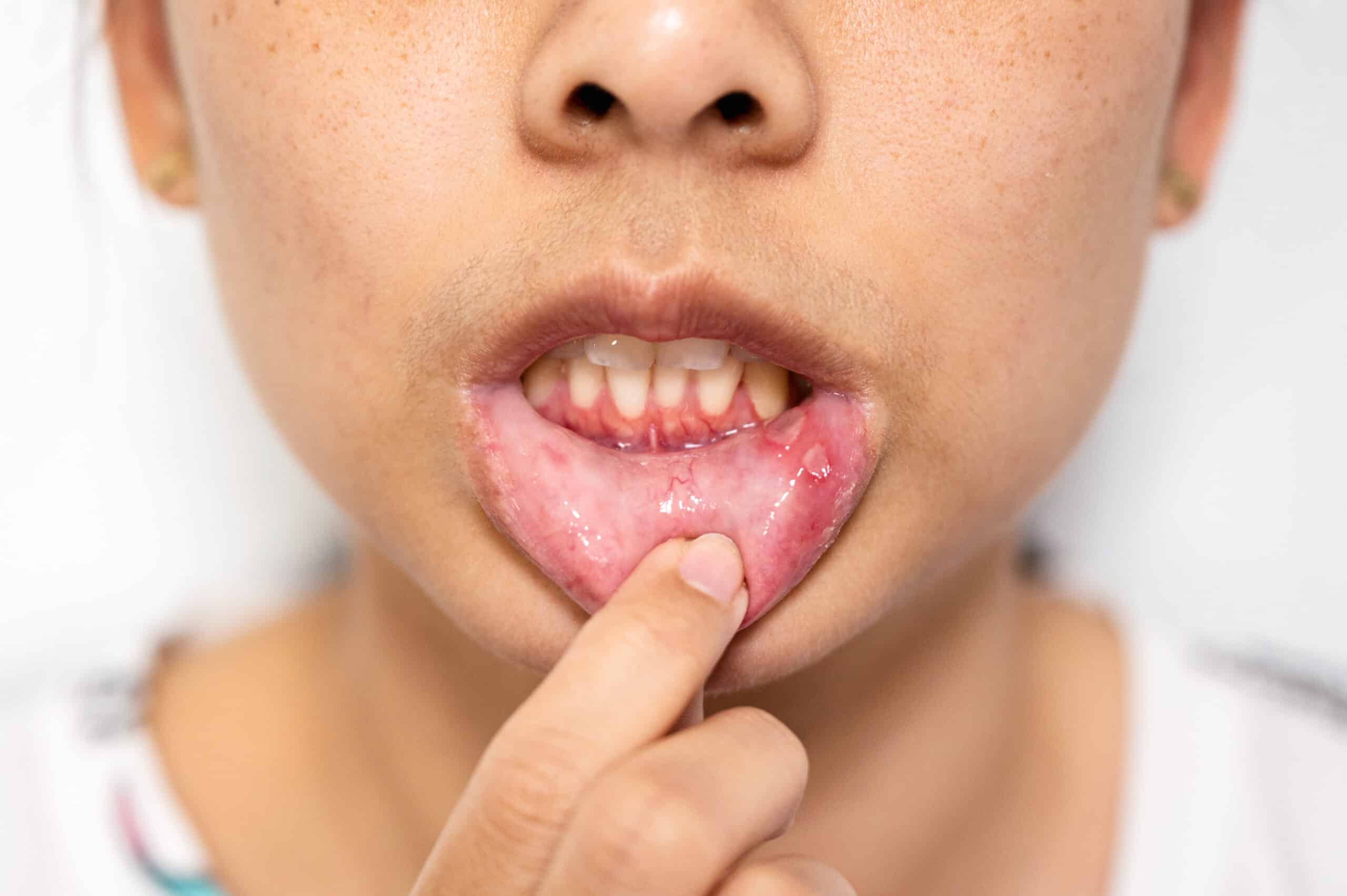
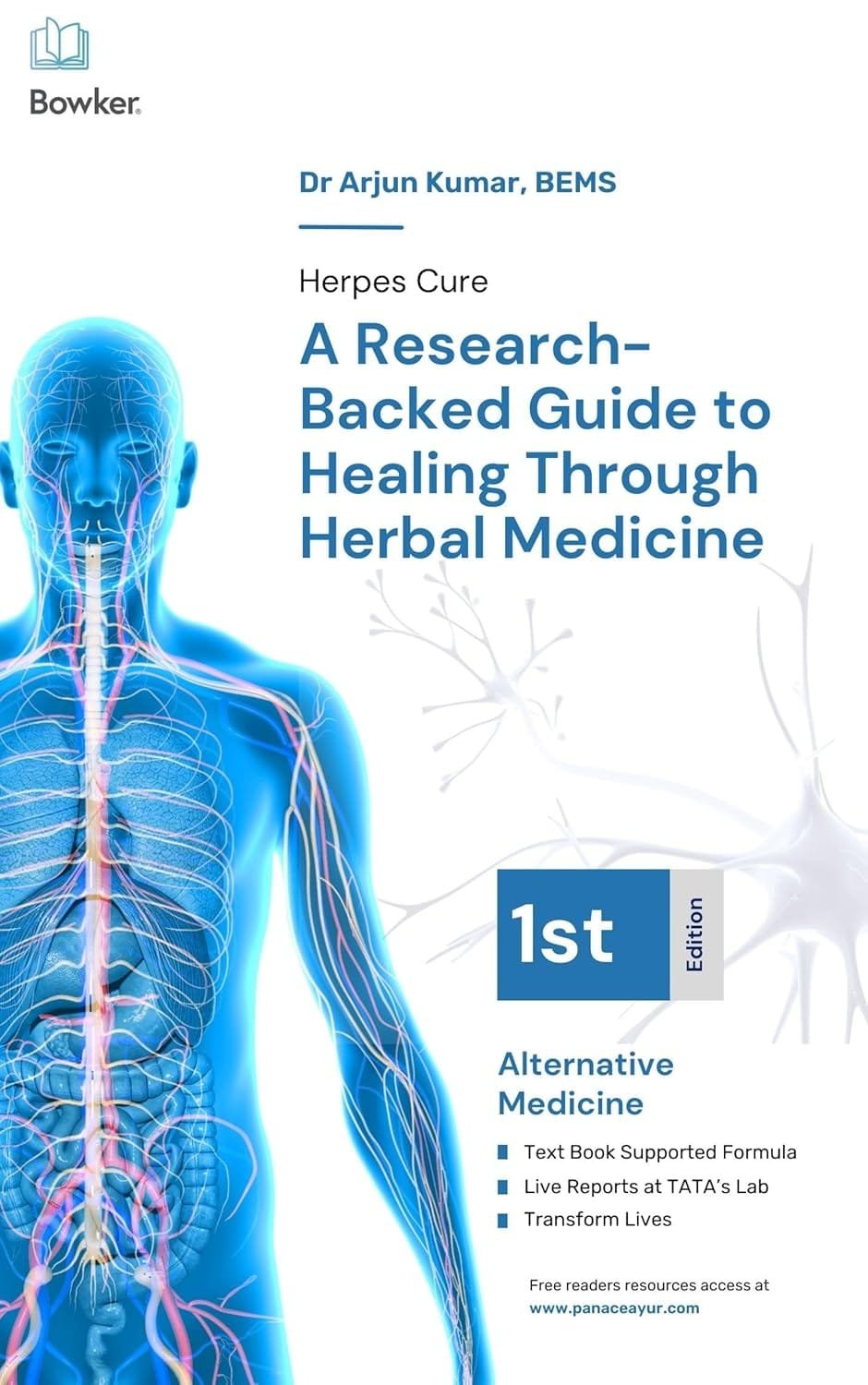
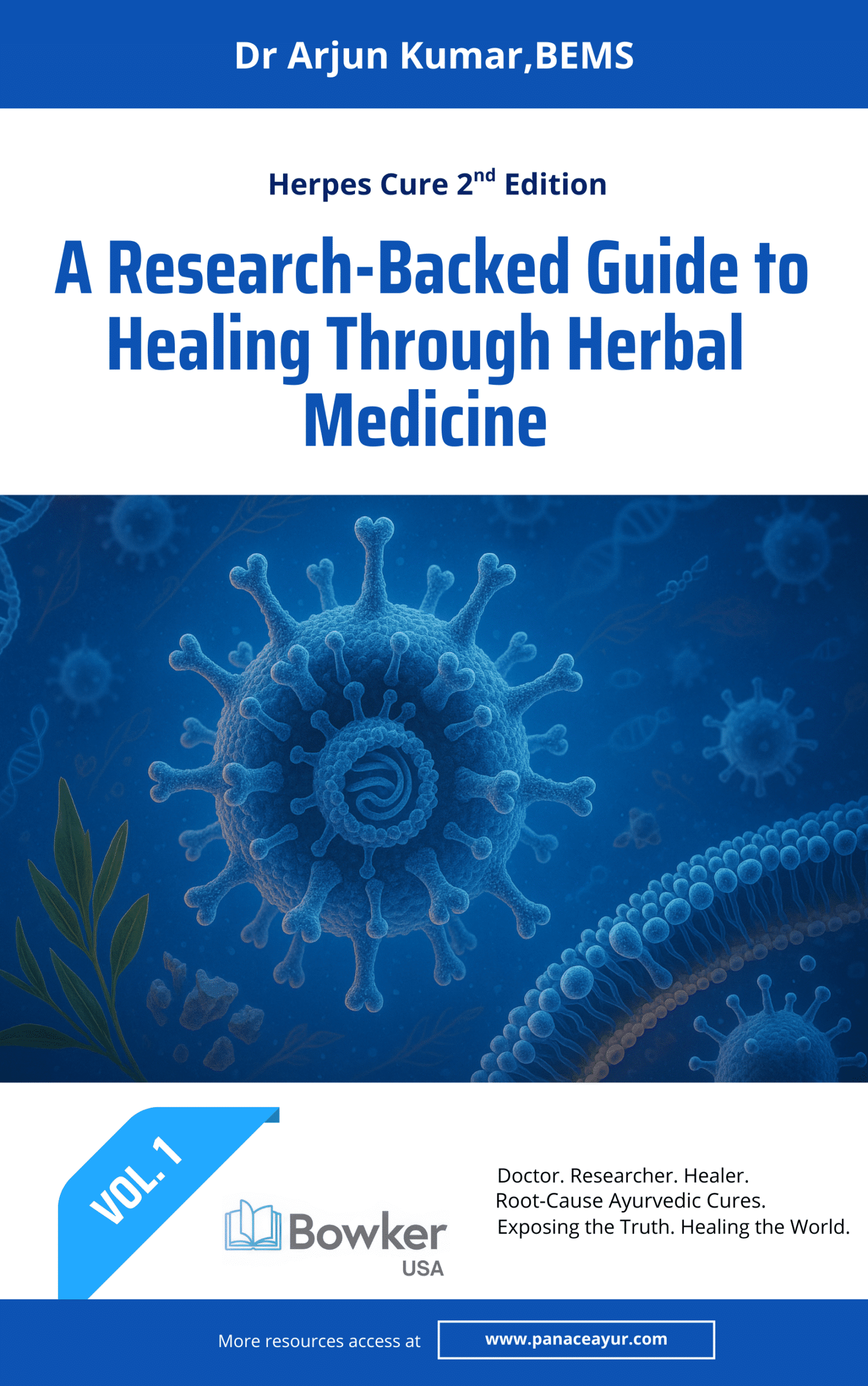



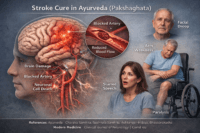
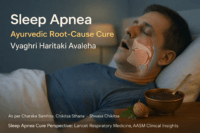
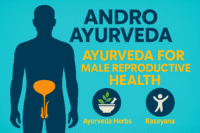
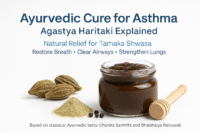
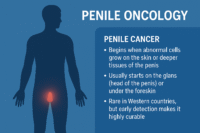
4 Responses
Thanks for the information, learned alot.
Thnks for ojes marvelous posting! I definitely enjoyed reading it, yyou could be a
grfeat author.I wkll bbe sure tto bookmark your
blogg and definitely wil come back sometijme soon. I want to encourage that you continue your great writing,
ave a nice day!
Thank you for your generous feedback. I’m pleased to hear that you enjoyed the article and found it valuable. Your support is truly appreciated, and it encourages me to continue producing high-quality, informative content. I look forward to your future visits—wishing you a wonderful day ahead
This is very informative! Such new knowledge from me, this blog is good.